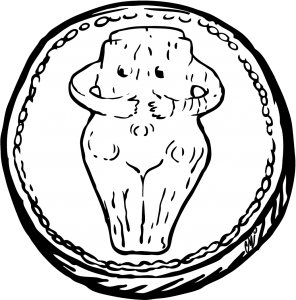ORIENT VERSUS OCCIDENT

In furthering the series of annual exhibitions organized by the Bucharest Pinacotheque, the Art Section of the Bucharest Municipality Museum organizes starting with December 2021, at Suțu Palace a patrimony compendium from the Bucharest Pinacotheque collection, meant to illustrate and clarify as much as possible the connotations of Orient and Occident concepts and how they influenced the Romanian fine arts.
The exhibition will analyze two worlds: the West and the Est; both of them proposed unique aesthetic values in the 19th and 20th centuries: the West is the measure of reason, while the East is an oasis of contemplation.
In the Romanian artistic environment, the East and the West are poles of creation: for example, the paintings with a magnificent color by Gheorghe Petrașcu are divided between trips to the West ‒ France, Italy, Spain and those to Dobrogea, Quadrilater region or even Egypt. Another painter, Samuel Mützner, defines his artistic style in Claude Monet’s studio and takes from it the principles of impressionism, namely the expression through painting of understanding the nature, not its realism. Mützner travels to the Far East (China, Japan), but also to South America.
Also, we must not forget the artists who traveled and studied in the West and who captured in their painting the specifics of these places, whether landscapes or characters. Thus, the Fontainebleau and Barbizon School will make its mark on some important painters for the history of national art: Ion Andreescu and Nicolae Grigorescu. Brittany, the rural and marine landscapes of this area fascinate whole generations of Romanian artists, starting with Grigorescu who visits Dinan, Dinard, Saint-Malo, Mont-Saint-Michel, the Normandy coast, and Granville. Others will follow him on journeys of initiation: Nicolae Grant, Theodor Pallady, Gheorghe Petrașcu, Max Wexler Arnold, Eustațiu Stoenescu, Elena Popea, Iosif Iser. The landscapes created by Cecilia Cuțescu Storck in Italy, France, Spain and Portugal also remain a reference in Romanian art.
Perceived, due to its geographical positioning, as the “turntable” of European politics in the context of the expansion and domination of the Ottoman Empire, Romania is since the beginning of the 19th century one of the countries that quickly used oriental influences in art. The oriental theme attracted young Romanian artists who studied in large Western cultural centers and approached it preferentially after returning to the homeland. Thus, an intersection of oriental and occidental cultural models takes place at the Eastern Gates of Europe, which imprints on the Romanian society a new specificity, completely different from what had existed until then, in all existential planes, with “reverberations in the field of visual arts too.”
In Romanian painting, from the middle of the 19th century until the end of it, the oriental theme will bring to the fore several painters, including C.D. Rosenthal, Barbu Iscovescu, Gheorghe Tattarescu, Carol Pop de Szathmáry, Theodor Aman, who have a considerable contribution to the approach of modern Romanian painting to the age of its maturity by bringing a thematic increase, by adding a new field and by perfecting the plastic language, as a whole. Theodor Aman, for example, is also seduced by the Levantine lifestyle, and influenced by the orientations of French painting fascinated by Orientalism. Aman paints harem scenes, portraits of sultanas or seductive odalisques, in a world situated between dream and reality.
But the place where the Orient and its specific artistic manifestations met the Romanian art of the 20th century, especially the painting, was Balchik, a city on the Caliacra area, or the Silver Coast, as it would be called by Queen Maria who built a palace there. Located on the Black Sea shore, the city belonged to Romania until 1940, when, following the Treaty of Craiova, Romania was forced to cede the Quadrilater to Bulgaria.
In the interwar period, Balchik gave many artists the opportunity to know themselves, the special landscape, through atmosphere and color, becoming the place the most sought-after by all Romanian painters of the time ‒ Iosif Iser, Jean Al. Steriadi, Cecilia Cuțescu Storck, Nicolae Dărăscu, Nicolae Tonitza, Constantin Artachino, Mina Byck Wepper, Dumitru Ghiață etc. “Barbizon, the banks of the Seine, Honfleur, Cassis are places that mean outdoor painting, impressionist painting or, in short, painting. For Romanian art, Balchik is no less. It is, for our modern painting, the school of new colorism […] ”[1]
The exhibition will present a wide selection of works of painting, graphics, but also sculpture from the rich collection of the Bucharest Pinacotheque, offering a journey through the cities of Western Europe and the Orient. It is a plastic manifesto dedicated to illustrating the diversity of sources of artistic inspiration, revealing differences between East and West, classic and modern, and an attempt to recover some places and some unique and exotic characters.
Dr. Elena Olariu, Deputy Director of Art, Restoration, Conservation
Drd. Ana Maria Măciucă-Pufu, museographer, Bucharest Municipality Pinacotheque
[1] Alexandru Busuioceanu, Writings about art, Meridiane Publishing House, Bucharest, 2000, pp. 89-92.

